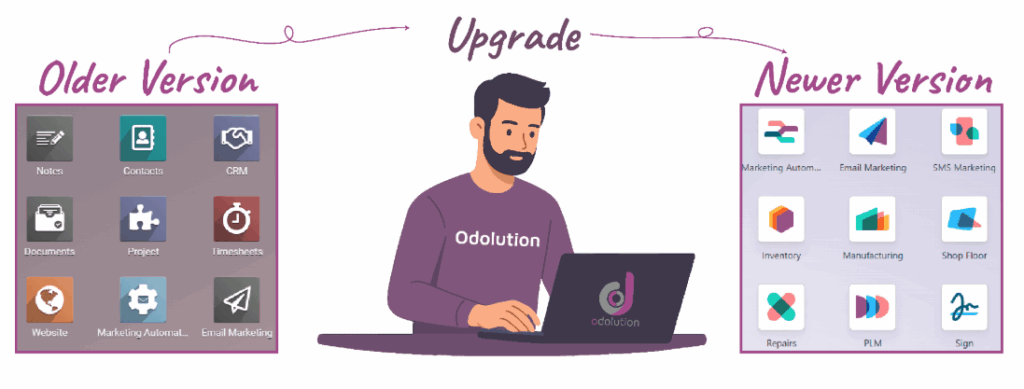Odoo is a popular business management tool, and updating to the latest version ensures better security and new features. Odoo 18 offers a faster interface, improved apps, and enhanced performance compared to version 17. This guide explains how to upgrade smoothly.
1. Preparing for the Upgrade
Back up your Odoo 17 database and files. Check if your hardware meets Odoo 18’s requirements. Verify compatibility of custom modules and third-party apps. Set up a test environment and inform users about downtime.
2. Upgrade Options
You can upgrade manually or use Odoo’s official service providers like odolution. Manual upgrades require technical skills but offer control. The official service is easier but might take longer and cost more. Choose what fits your resources.
3. Manual Upgrade Steps
-
Install dependencies for Odoo 18.
-
Download and set up Odoo 18.
-
Migrate custom modules and themes.
-
Upgrade the database using OpenUpgrade or Odoo tools.
-
Test in a staging environment.
-
Troubleshoot issues.
4. Official Upgrade Service
Request the upgrade on Odoo’s platform, prepare your database, follow their schedule, and verify everything works after the upgrade.
5. After the Upgrade
Check data and modules for issues. Update customizations. Train users on new features and set up regular maintenance.
6. Best Practices
Schedule upgrades during low usage. Communicate clearly. Have a rollback plan and keep backups before and after upgrading.
Upgrading to Odoo 18 improves security and performance. Proper planning helps avoid problems. Reach out with questions or share your upgrade experience.




